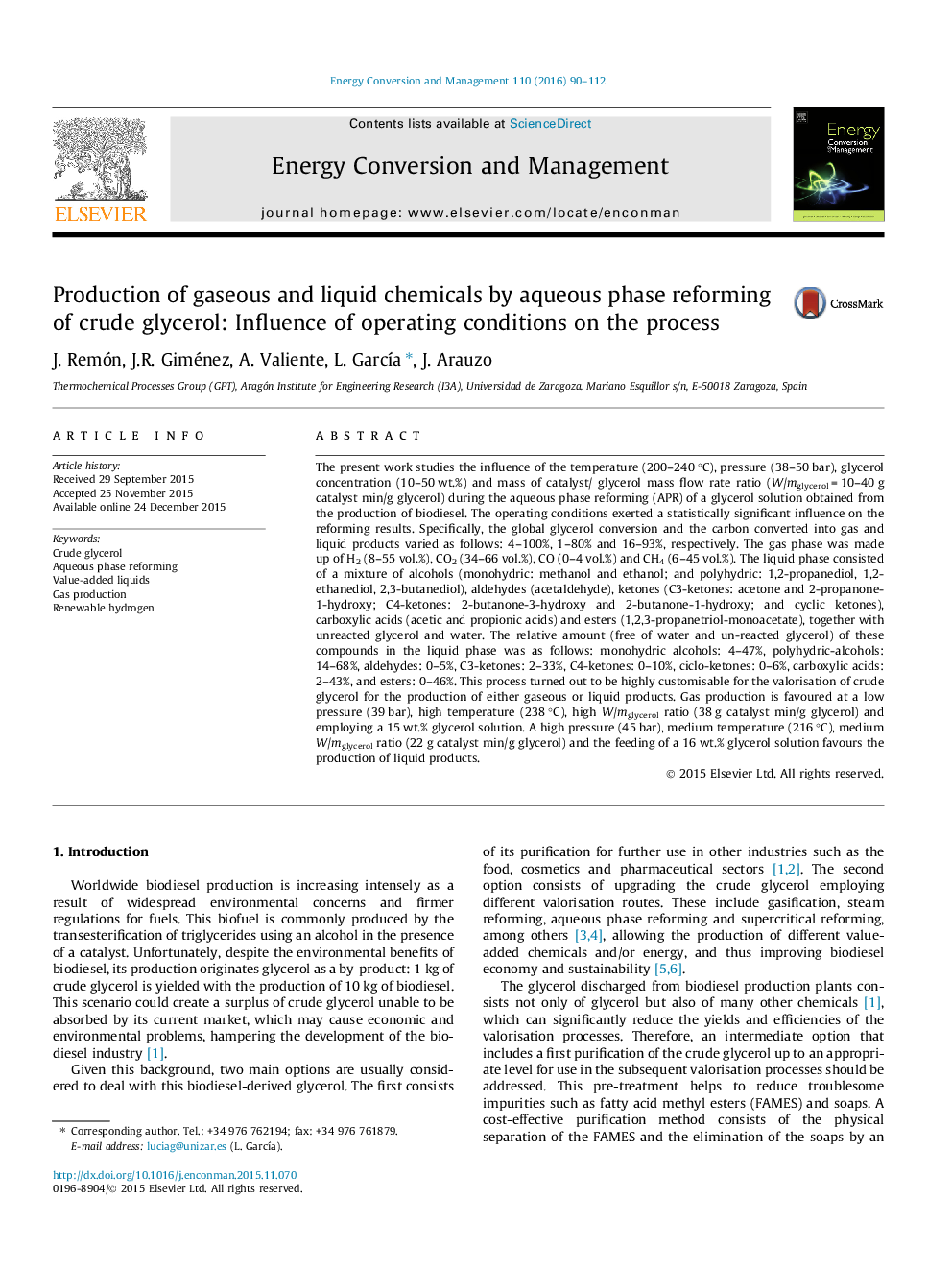| کد مقاله | کد نشریه | سال انتشار | مقاله انگلیسی | نسخه تمام متن |
|---|---|---|---|---|
| 760366 | 1462852 | 2016 | 23 صفحه PDF | دانلود رایگان |
• Aqueous phase reforming: a tailor-made process for the valorisation of crude glycerol.
• In-depth understanding of the effect of the operating conditions on the process.
• Process optimisation for the selective production of valuable gas and liquid products.
• Low pressure and high temperature and spatial time favour gas production.
• High pressure and medium temperature maximise the production of valuable liquids.
The present work studies the influence of the temperature (200–240 °C), pressure (38–50 bar), glycerol concentration (10–50 wt.%) and mass of catalyst/ glycerol mass flow rate ratio (W/mglycerol = 10–40 g catalyst min/g glycerol) during the aqueous phase reforming (APR) of a glycerol solution obtained from the production of biodiesel. The operating conditions exerted a statistically significant influence on the reforming results. Specifically, the global glycerol conversion and the carbon converted into gas and liquid products varied as follows: 4–100%, 1–80% and 16–93%, respectively. The gas phase was made up of H2 (8–55 vol.%), CO2 (34–66 vol.%), CO (0–4 vol.%) and CH4 (6–45 vol.%). The liquid phase consisted of a mixture of alcohols (monohydric: methanol and ethanol; and polyhydric: 1,2-propanediol, 1,2-ethanediol, 2,3-butanediol), aldehydes (acetaldehyde), ketones (C3-ketones: acetone and 2-propanone-1-hydroxy; C4-ketones: 2-butanone-3-hydroxy and 2-butanone-1-hydroxy; and cyclic ketones), carboxylic acids (acetic and propionic acids) and esters (1,2,3-propanetriol-monoacetate), together with unreacted glycerol and water. The relative amount (free of water and un-reacted glycerol) of these compounds in the liquid phase was as follows: monohydric alcohols: 4–47%, polyhydric-alcohols: 14–68%, aldehydes: 0–5%, C3-ketones: 2–33%, C4-ketones: 0–10%, ciclo-ketones: 0–6%, carboxylic acids: 2–43%, and esters: 0–46%. This process turned out to be highly customisable for the valorisation of crude glycerol for the production of either gaseous or liquid products. Gas production is favoured at a low pressure (39 bar), high temperature (238 °C), high W/mglycerol ratio (38 g catalyst min/g glycerol) and employing a 15 wt.% glycerol solution. A high pressure (45 bar), medium temperature (216 °C), medium W/mglycerol ratio (22 g catalyst min/g glycerol) and the feeding of a 16 wt.% glycerol solution favours the production of liquid products.
Journal: Energy Conversion and Management - Volume 110, 15 February 2016, Pages 90–112
